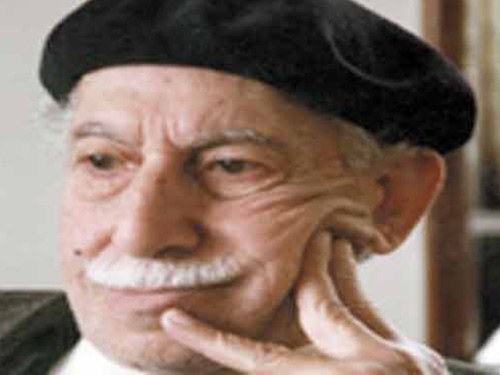On Sunday 23 November, the American University in Cairo dedicated an art gallery to honor the memory of prominent artist Margo Vellion (1907-2003)
Max Strasser
The Margo Veillon Gallery at the downtown campus of the American University in Cairo (AUC) showcases the work of an artist who lived in Egypt for almost the entire twentieth century. AUC Press, which has had a relationship with Veillon since 1960, built the Margo Veillon Gallery to share the collection that Veillon left to the publishing house when she died in 2003.
Veillon was born in Cairo in 1907 to a Swiss father and an Austrian mother. Aside from various travels around the world, she spent her whole life in Egypt. Veillon was known for her watercolor paintings that depict the life and landscape of the Egyptian countryside, and the gallery highlights a body of her more abstract work.The space is divided into two distinct halves: “Nocturnes” and “Perspectives,” a temporary exhibit and a permanent collection respectively.
Nocturnes are a series of colorful and energetic paintings that Veillon made during the 1991 Gulf War. “She said it was during the night when the bombers were going,” says Bruno Lanford, the curator of the exhibition. He recalls Veillon saying, “I couldn’t sleep and I was painting to give peace to the world.” During those sleepless nights she would listen to loud music by modern composers and fervently create art. The intensity of the experience is clear in the paintings, most of which feature abstracted hands and faces amid a mass of bright colors and strong lines. The work featured in Nocturnes has a hurried and improvised feeling.
The work in Perspectives, on the other hand, is far more studied. The collection consists of a series of Cubist-style paintings that all take place within a single room. In each, the artist herself features prominently, though at times more as a jumbled collection of limbs at right-angles reclining behind a canvas than a discernible representation of the painter. The walls of the room are arranged at angles that create the sensation of a larger space larger than one could ever find in a real room. The effect is dreamlike.
The windows in these paintings are especially important. “Look at this,” says Lanford, framing an image in the window of one of Veillon’s paintings. “You can see a Kandinsky or something here. She puts a painting inside of the painting.”
This series, according to Lanford, is Veillon’s best work. “She excelled in reflecting the essence of Egyptian life,” he says. These paintings are her masterpieces, which is why they have been made into a permanent collection at the new gallery.
The new gallery itself is pleasant and modern, but small, sometimes feeling overcrowded. One has the feeling that the curators were so enthusiastic about Veillon’s art that they had a hard time choosing which of the more than 5000 pieces to include. Small stickers indicate the titles of pieces, but do not mention the year they were made or the media Veillon used.
But these problems may be improved in the future. The Margo Veillon Gallery will be a permanent fixture at the downtown AUC campus, and AUC Press now holds over 5000 pieces by Veillon.
The size of the collection is an asset. Indeed, the length of Veillon’s life and her devotion to making art are what make her so remarkable. Linz says, “To have painted Egypt for almost an entire century and painted it from the people in the villages to the landscapes of the desert and the Nile, to Nubia to the Delta, this is an incredible harvest of art about Egypt.”
.




